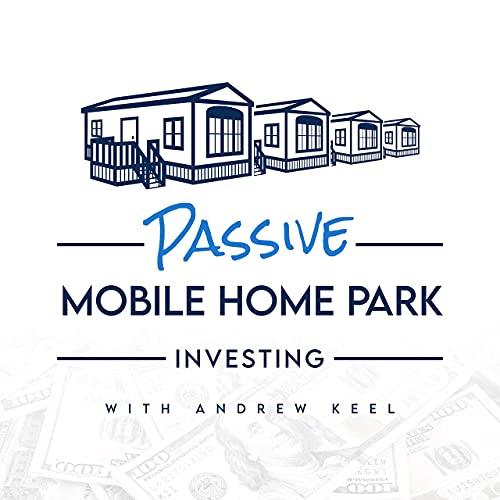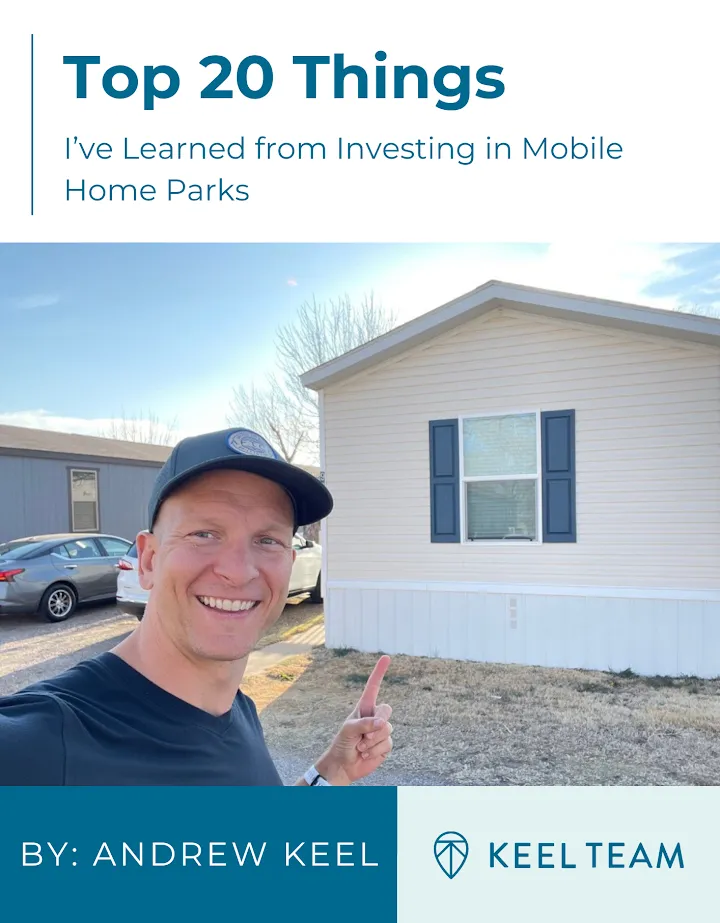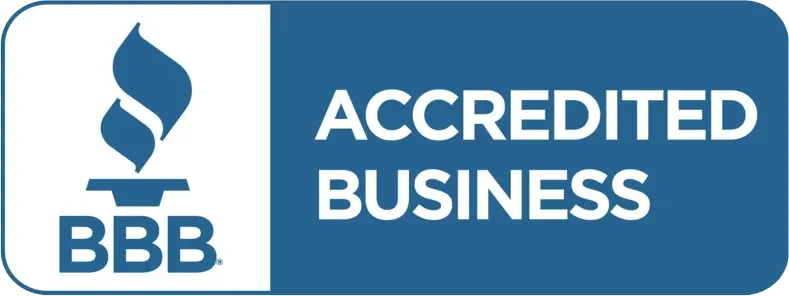How to Analyze a Mobile Home Park Deal in Under 10 Minutes
-
 Tristan Hunter - Investor Relations
Tristan Hunter - Investor Relations

Analyzing a mobile home park deal quickly may seem challenging, but investors often use a simple, structured approach to get a fast sense of whether a property is worth deeper due diligence. While no quick review can guarantee accuracy or outcomes, a fast screening process might help you avoid wasting time on mobile home park deals that do not meet your initial investment criteria.
Why a Quick Mobile Home Park Analysis Matters
A fast analysis helps you filter mobile home park opportunities before spending hours requesting documents, calling utility providers, or driving to visit the location. Because many mobile home home park listings receive multiple inquiries, investors often try to respond quickly. This approach lets you determine whether the deal deserves more attention without jumping into full underwriting.
Step 1: Confirm the Basic Property Information
Start by reviewing the essential details provided in the listing. Most mobile home park deal summaries include lot count, occupancy, utility type, and current income. These metrics give you the first clues about whether the property aligns with your strategy.
Key Questions to Ask
- How many total lots does the mobile home park have?
- How many lots are currently occupied?
- Does the mobile home park rely on public utilities or private systems?
- How many of the homes are tenant-owned versus mobile home park-owned?
- What is the current monthly lot rent and home rent (if any)?
These questions guide your immediate understanding of the mobile home park’s income structure and potential risk factors. For example, mobile home parks with many mobile home park-owned homes might require more management oversight. Mobile home parks with private sewer systems may present additional operational considerations.
Step 2: Assess the Income at a High Level
Next, evaluate whether the reported income appears reasonable. You are not building a final pro forma here; you are simply checking for consistency.
Estimate Monthly and Annual Revenue
Use the following simple formulas:
Monthly Rent Revenue
Occupied Lots × Lot Rent
Annual Rent Revenue
Monthly Revenue × 12
If the mobile home park includes mobile home park-owned homes, add estimated home rent as well. Remember that these numbers may need verification later, but a quick estimate can help you understand whether the listed income aligns with the occupancy and rent levels.
Compare Rents to Market Averages
A mobile home park with below-market rents might suggest an opportunity for future increases, but this also depends on state laws and local competitive conditions. A quick online search may help reveal whether the stated lot rents are unusually high or low for the region. This comparison provides context for potential income growth and long-term stability.
Download our FREE eBook on the Top 20 things to know BEFORE investing in mobile home parks!
Step 3: Estimate the Expenses
Mobile home park expenses can vary widely, but a rough expense ratio may help you approximate whether the deal appears balanced. Many experienced operators tentatively estimate expenses around 30% to 45% of gross income for stabilized mobile home parks with mostly tenant-owned homes. This number may be higher for mobile home parks with extensive mobile home park-owned homes or private utilities.
Consider the Main Expense Categories
- Utilities: Are they paid by the mobile home park owner or sub-metered to residents?
- Management: Onsite or third-party management typically depends on size.
- Maintenance: Roads, tree work, landscaping, and repairs often vary widely.
- Insurance and Property Taxes: These costs often increase after acquisition.
- Repairs and CapEx: Aging infrastructure may require investment.
At this stage, you are only looking for possible inconsistencies. For instance, if a mobile home park shows unusually low expenses in the listing, further investigation might be required later.
Step 4: Estimate the Net Operating Income (NOI)
Once you have a high-level income number and a rough expense estimate, you can create a preliminary net operating income estimate.
Quick NOI Formula
Gross Income − Estimated Expenses = Approximate NOI
This number helps you understand whether the mobile home park’s current financial performance might support the seller’s asking price.
Step 5: Compare the Pricing to Market Cap Rates
Mobile home park valuations often rely on the capitalization rate, or cap rate, which reflects the relationship between NOI and the purchase price. Because cap rates vary by region, quality, tenant base, and utility type, this step focuses on identifying whether the asking cap rate seems aligned with the broader market.
Calculate the Approximate Cap Rate
Use the estimated NOI and the asking price:
Cap Rate = NOI ÷ Purchase Price
If the cap rate appears unusually low for the market, the mobile home park may rely on upside potential rather than strong in-place performance. If the cap rate appears unusually high, the mobile home park may require more due diligence to verify the accuracy of the financials or understand possible risks.
Step 6: Review the Utility Systems
Utility structure is one of the most influential factors in mobile home park performance. A quick review of the utilities may help you understand potential risk and operational complexity.
Consider These Utility Elements
- Water: Public water systems often simplify operations, but private wells may require maintenance.
- Sewer: Public sewer systems tend to reduce risk, while septic systems or wastewater treatment plants often require more attention.
- Electric and Gas: Individually metered utilities typically reduce operating costs.
- Trash: City-provided trash services might reduce expenses.
If a mobile home park lists private utilities, it may still be viable, but it may require deeper analysis later. This step is about understanding what you are potentially taking on.

Step 7: Examine the Location and Market Factors
Location influences long-term occupancy, rent stability, and demand for affordable housing. Even during a quick review, you can often learn enough to decide whether the mobile home park deserves deeper research.
Look for These Indicators
- Population growth or stability
- Employment levels and local industries
- Median household income
- Number of competing mobile home parks
- Vacancy trends in the area
A ten-minute analysis may not reveal everything, but it should show whether the surrounding market appears supportive of a mobile home park investment.
Step 8: Evaluate the Value-Add Potential
Some investors look for mobile home park deals that may offer opportunities to increase income or reduce expenses. During your quick analysis, look for easy-to-spot potential improvements.
Possible Value-Add Opportunities
- Below-market lot rents
- Vacant lots that could be filled
- Underutilized land
- Mobile home park-owned homes that could be sold to residents
- Water or sewer expenses that could potentially be passed through
These ideas often depend on local conditions and regulations, so you may need to research further. However, spotting them early helps determine whether the deal fits your strategy.
Step 9: Identify Immediate Red Flags
A ten-minute analysis should also help you screen for potential deal-breakers. Red flags may vary by investor, but identifying them early might save time.
Common Warning Signs
- Large numbers of mobile home park-owned homes
- Significant infrastructure issues reported in the listing
- Inconsistent financials or missing information
- Private utilities without recent inspection reports
- Extremely low rents that suggest a long stabilization period
These points do not always signal a bad deal, but they usually require deeper review before moving forward.
Step 10: Decide Whether the Mobile Home Park Deserves Full Underwriting
At the end of your ten-minute analysis, the goal is not to make a final decision. Instead, you are simply deciding whether the mobile home park appears promising enough to justify more detailed underwriting.
Ask Yourself
- Does the mobile home park appear consistent with my investment criteria?
- Does it seem like the financials could support the asking price?
- Are there manageable risks worth exploring?
- Is the value-add potential realistic given market conditions?
If the answers lean positive, the mobile home park may warrant deeper due diligence.
Final Thoughts
Performing a ten-minute mobile home park deal analysis allows you to quickly screen opportunities, avoid time-consuming evaluations, and focus on properties that may best match your goals. This approach cannot guarantee accuracy, and deeper analysis is always necessary before pursuing any investment. However, a structured, simple process may help you become more efficient and selective with your deal flow.
Are you looking for MORE information? Book a 1-on-1 consultation with Andrew Keel to discuss:
- A mobile home park deal review
- Due diligence questions
- How to raise capital from investors
- Mistakes to avoid, and more!
Disclaimer:
The information provided is for informational purposes only and is not investment advice or a guarantee of any kind. We do not guarantee profitability. Make investment decisions based on your research and consult registered financial and legal professionals. We are not registered financial or legal professionals and do not provide personalized investment recommendations.

Tristan Hunter - Investor Relations
View The Previous or Next Post
Subscribe Below 👇





